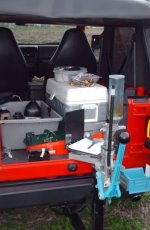Hi all. As previously stated I have loaded some 9mm with Win 231. To me that is pretty straight forward. Good enough for plunking and IDPA is all I need.
I have 4 rifles (2 different calibers) I need to work up loads for. I am looking for a regimented way to keep it all organized. I figure I will work on one at a time. More importantly I am wondering how you work up a rifle load from scratch? Seems to me that it makes more sense to find an available powder that will work for both and base bullets on the rifles twists. .223 and .30-06 with IMR4895 is what I am thinking. Also how do you organize your data books or are there templates for this? Thank you.
I have 4 rifles (2 different calibers) I need to work up loads for. I am looking for a regimented way to keep it all organized. I figure I will work on one at a time. More importantly I am wondering how you work up a rifle load from scratch? Seems to me that it makes more sense to find an available powder that will work for both and base bullets on the rifles twists. .223 and .30-06 with IMR4895 is what I am thinking. Also how do you organize your data books or are there templates for this? Thank you.
Last edited:


